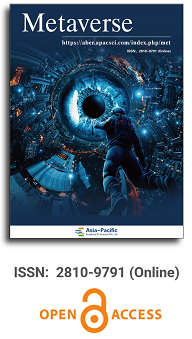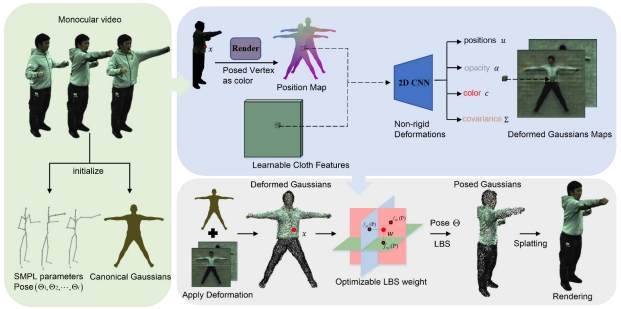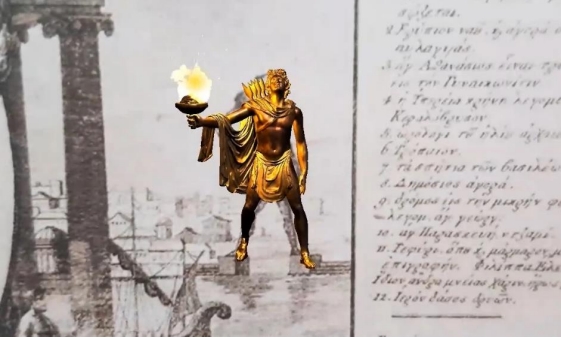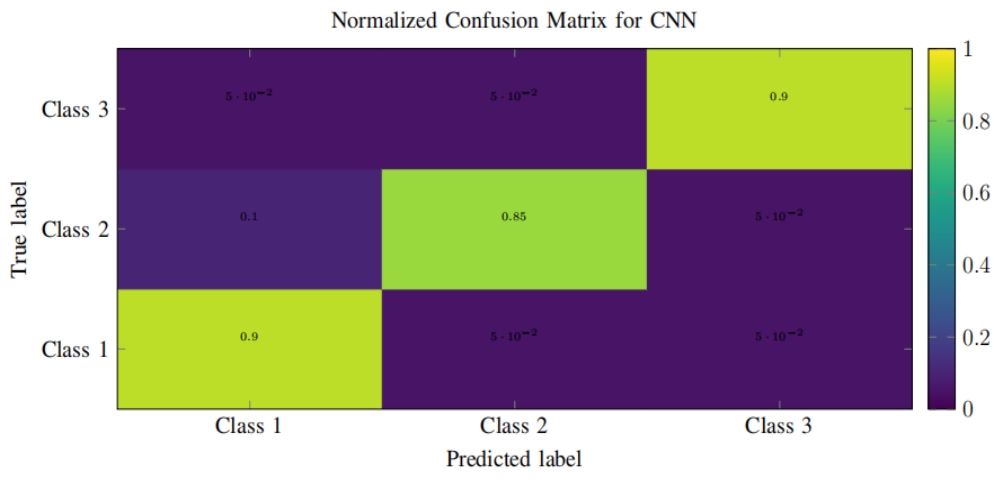
Asia Pacific Academy of Science Pte. Ltd. (APACSCI) specializes in international journal publishing. APACSCI adopts the open access publishing model and provides an important communication bridge for academic groups whose interest fields include engineering, technology, medicine, computer, mathematics, agriculture and forestry, and environment.



Liminality and the metaverse: An analysis of mytho-liminal and mystic-liminal games and their impact on player identity
Vol 6, Issue 1, 2025
Download PDF
Abstract
The article explores the impact of liminality in immersive games on players’ identity from two perspectives: overcoming liminal phases associated with the initiation of a character in games with a narrative-plot architecture that reflects the universal stages of the hero’s “journey”; and overcoming liminality in survival horror games, where players use the virtual world to experiment with their psyche. It introduces and substantiates the terms of mytho-liminal and mystical-liminal games, assessing their positive and negative effects based on data from semi-structured interviews with student groups, totaling 120 informants. After processing the interview data and deriving quantitative indicators, the findings were refined and justified through the lens of research on liminal states, game psychology, and psychological studies on out-of-body experiences in virtual reality. It has been found that the positive effects of mystical-liminal games include the experience of emotions unattainable in the real world, development of coping potentials, working through unconscious conflicts and psychological traumas, and strengthening the moral imperative with a clear distinction between good and evil. The negative impact of mystical liminality manifests in feelings of fear, tension, and discomfort during gameplay, feelings of helplessness and frustration in cutscenes, and cognitive stress due to disidentification with the projective identity when the player’s “positive” avatar is transformed into an immoral character. The positive effects of mytho-liminal games include: enhancement of the sense of subjectivity, awareness of an ideal to emulate, strengthening of the value component of personality, development of creativity and problem-solving skills, unleashing positive potential of latent, unrealized possibilities, development of communication skills, and liberation from social conventions. Negative effects include self-dissociation and depersonalization in both psychological and physical terms, realization of latent destructive needs and deviant behavior, and the substitution of real initiation–finding one’s “self”–with pseudo-initiation through gameplay. This research provides insights into the intersection of liminal and virtual realities, shedding light on the psychological dimension of liminality in video games and enhancing the overall understanding of the liminality role in the virtual context.
Keywords
References
- Turner V. The Ritual Process: Structure and Anti-Structure. Aldine Transaction; 1995.
- Campbell J. The Hero with a Thousand Faces. Princeton University Press; 1949.
- Gee JP. What Video Games Have to Teach Us About Literacy and Learning. Palgrave Macmillan; 2003.
- Jung CG. The Portable Jung. In: Campbell J (editor). Viking Press; 1971.
- Van Gennep A. The Rites of Passage. University of Chicago Press; 1960.
- Chaika O. Ritual Nominal Units Denoting Conjugal Relations in the Ukrainian, English and Portuguese Languages (Ukrainian). Roczniki Humanistyczne. 2010; 58(7): 41–57.
- Proctor D. Bytes of Passage: Video Game Inhabitation as Ritual. Acta Iassyensia Comparationis. 2012; 10: 176–185.
- Turner V. The Forest of Symbols: Aspects of Ndembu Ritual. Cornell University Press; 1967.
- Jenkins H. Game Design as Narrative Architecture. In: Harrington P, Wardrup-Fruin N (editors). First Person: New Media as Story, Performance, and Game. MIT Press; 2004. pp. 118–130.
- Juul J. Games Telling Stories? A brief note on games and narrative. Game Studies. 2001; 1(1).
- Delmas G, Champagnat R, Augeraud M. Bringing Interactivity into Campbell’s Hero’s Journey. In: Proceedings of the Virtual Storytelling: Using Virtual Reality Technologies for Storytelling, 4th International Conference, ICVS; 5–7 December 2007; Saint-Malo, France. pp. 187–195.
- Jung CG. The Archetypes and the Collective Unconscious. In: Collected Works of C. G. Jung, 2nd ed. Princeton University Press; 1968. Volume 9.
- Geraci R, Recine N, Fox S. Grotesque gaming: the monstrous in online worlds. Preternature: Critical and Historical Studies on the Preternatural. 2016; 5(2): 213–236.
- Turkle S. Life on the Screen: Identity in the Age of the Internet. Weidenfeld & Nicholson; 1996.
- Frasca G. Simulation versus narrative: Introduction to ludology. In: Wolf MJP, Perron B (editors). The video game theory reader. Routledge; 2013. pp. 221–235.
- Johnston SI. Restless Dead: Encounters between the Living and Dead in Ancient Greece. University of California Press; 1999.
- Kravchenko N, Prokopchuk M, Yudenko O. Afro-American rap lyrics vs. fairy tales: Possible worlds and their mediators. Cogito. 2021; 13(1): 146–168.
- Propp V. Morphology of the folktale. University of Texas Press; 1968.
- Kravchenko N, Goltsova M, Snitsar V. Сyclical time in fairy tale and rap lyrics: Points of intersection. Lege artis. 2021; 6(1): 75–108.
- Lynch T, Martins N. Nothing to fear? An analysis of college students’ fear experiences with video games. Journal of Broadcasting & Electronic Media. 2015; 59(2): 298–317. doi: 10.1080/08838151.2015.1029128
- Flanagan M. Facing fear during times of uncertainty–Guest Essay by Filmmaker Mike Flanagan. Available online: https://bloody-disgusting.com/editorials/3611821/facing-fear-times-uncertainty-guest-essay-filmmaker-mike-flanagan/(accessed on 3 October 2024).
- Kerr M, Siegle GJ, Orsini J. Voluntary arousing negative experiences (VANE): Why we like to be scared. Emotion. 2019; 19(4): 682–698. doi: 10.1037/emo0000470
- Scrivner C, Andersen MM, Schjødt U, Clasen M. The psychological benefits of scary play in three types of horror fans. Journal of Media Psychology: Theories, Methods, and Applications. 2023; 35(2): 87–98. doi: 10.1027/1864-1105/a000354
- Schoneveld EA, Malmberg M, Lichtwarck-Aschoff A, et al. A neurofeedback video game (MindLight) to prevent anxiety in children: A randomized controlled trial. Computers in Human Behavior. 2016; 63: 321–333. doi: 10.1016/j.chb.2016.05.005
- Kirkland E. Restless Dreams and Shattered Memories: Psychoanalysis and Silent Hill. Brumal: Research Journal on the Fantastic. 2015; 3(1): 161–182.
- Vorobej M. Monsters and the Paradox of Horror. Dialogue. 1997; 24: 219–249.
- Haan N. Coping and Defending: Processes of Self-Environment Organization. Academic Press; 1977.
- Grodal T. Video Games and the Pleasure of Control. In: Zillmann D, Vorderer P (editors). Media Entertainment: The Psychology of its Appeal. Lawrence Erlbaum Associates Publishers; 2000. pp. 197–213.
- Clasen M, Andersen M, Schjoedt U. Adrenaline Junkies and White Knucklers: A quantitative study of fear management in haunted house visitors. Poetics. 2019; 73: 61–71. doi: 10.1016/j.poetic.2019.01.002
- Krzywinska T. Hands-On Horror. In: Wu H (editor). Axes to Grind: Re-Imagining the Horrific in Visual Media and Culture. Academic Press; 2002. pp. 12–23.
- Eliade, М. Rites and Symbols of Initiation. Spring Publications; 1998.
- Hillis K. Digital Sensations: Space, Identity and Embodiment in Virtual Reality. Minnesota University Press; 1999.
- Bachelard G. The Poetics of Space. Beacon Press; 1969.
- Yee N, Bailenson JN, Ducheneaut N. The Proteus Effect: Implications of Transformed Digital Self-Representation on Online and Offline Behavior. Communication Research. 2009; 36(2): 285–312.
- Murray J. Hamlet on the Holodeck: The Future of Narrative in Cyberspace. The MIT Press; 1997.
- Bechar-Israeli H. From
to : Nicknames, Play, and Identity on Internet Relay Chat. Journal of Computer-Mediated Communication. 1995; 1(2). doi: 10.1111/j.1083-6101.1995.tb00325.x - Schutte NS, Stilinović EJ. Facilitating empathy through virtual reality. Motivation and Emotion. 2017; 41: 708–712. doi: 10.1007/s11031-017-9641-7
- Shin D. Empathy and embodied experience in virtual environment: To what extent can virtual reality stimulate empathy and embodied experience? Computers in Human Behavior. 2018; 78: 64–73.
- Thomassen B. Liminality and the Modern: Living Through the In-Between. Ashgate Publishing; 2014.
- Aardema F, O’Connor K, Côté S, Taillon A. Virtual Reality Induces Dissociation and Lowers Sense of Presence in Objective Reality. Cyberpsychology, Behavior, and Social Networking. 2010; 13(4): 429–435. doi: 10.1089/cyber.2009.0164
- Aardema F, Côté S, O’Connor K. Effects of virtual reality on presence and dissociative experience. Cyberpsychology, Behavior, and Social Networking. 2006; 9(6): 653.
- Lanier J, Biocca F. An Insider’s View of the Future of Virtual Reality. Journal of Communication. 1992; 42(4): 150–172.
- Hansen M. Embodying Virtual Reality: Touch and Self-Movement in the Work of Char Davies. Critical Matrix: The Princeton Journal of Women, Gender and Culture. 2001; 12(1–2): 112–147.
- Ducheneaut N, Wen MH, Yee N, Wadley G. Body and mind: A study of avatar personalization in three virtual worlds. In: Proceedings of the SIGCHI Conference on Human Factors in Computing Systems; 4–9 April 2009; Boston, MA, USA. pp. 1151–1160.
- Van Vugt HC, Bailenson JN, Hoorn JF, Konijn EA. Effects of facial similarity on user responses to embodied agents. ACM Transactions on Computer-Human Interaction. 2008; 17(2): 1–27.
- Cheung CMK, Wong RYM, Chan TKH. Online disinhibition: Conceptualization, measurement, and implications for online deviant behavior. Industrial Management & Data Systems. 2021; 121(1): 48–64.
Supporting Agencies
Copyright (c) 2025 Author(s)
License URL: https://creativecommons.org/licenses/by/4.0/

This site is licensed under a Creative Commons Attribution 4.0 International License (CC BY 4.0).

Prof. Zhigeng Pan
Director, Institute for Metaverse, Nanjing University of Information Science & Technology, China

Prof. Jianrong Tan
Academician, Chinese Academy of Engineering, China
Conference Time
December 15-18, 2025
Conference Venue
Hong Kong Convention and Exhibition Center (HKCEC)
...
Metaverse Scientist Forum No.3 was successfully held on April 22, 2025, from 19:00 to 20:30 (Beijing Time)...
We received the Scopus notification on April 19th, confirming that the journal has been successfully indexed by Scopus...
We are pleased to announce that we have updated the requirements for manuscript figures in the submission guidelines. Manuscripts submitted after April 15, 2025 are required to strictly adhere to the change. These updates are aimed at ensuring the highest quality of visual content in our publications and enhancing the overall readability and impact of your research. For more details, please find it in sumissions...






.jpg)
.jpg)

